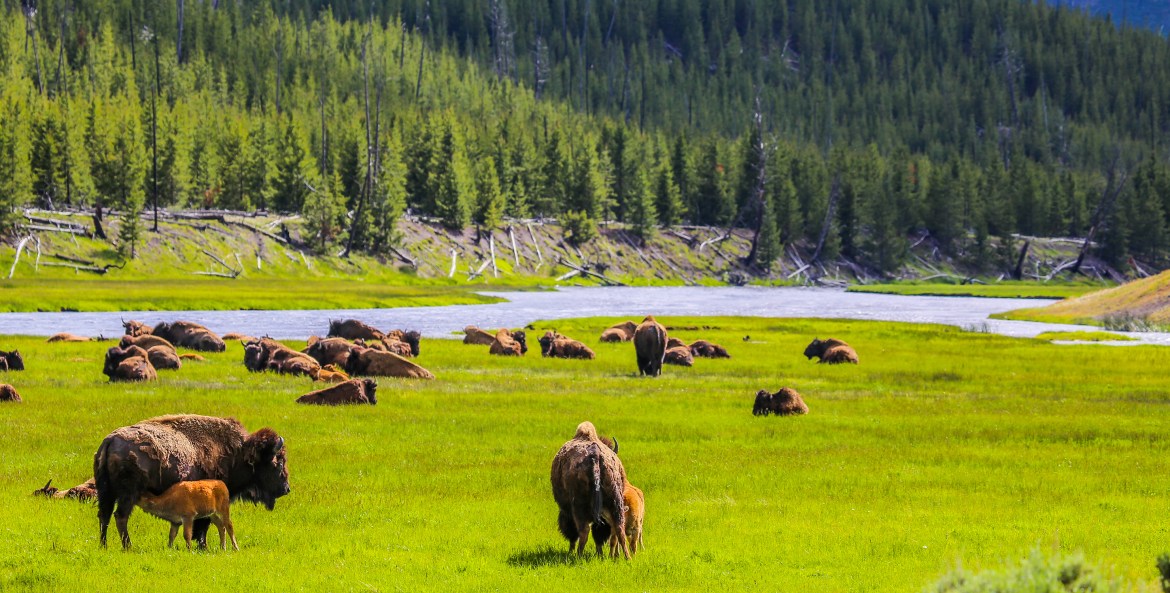Although Yellowstone was established as the first national park on March 1, 1872, the expanse of mostly Wyoming wilderness has hosted humans for far longer. Archaeological sites reveal that humans have been in the area for more than 11,000 years.
Today, more than 4 million people seek out Yellowstone’s alluring beauty each year, making it one of the most visited parks in the national park system. Covering more than 2 million acres, Yellowstone entices thanks to its prehistoric sites, gushing geysers (you may have heard of Old Faithful), and abundant wildlife. According to the National Park Service's figures, 96 percent of Yellowstone's 3,472 square miles cover Wyoming land, with 3 percent and 1 percent crossing into Montana and Idaho, respectively.
Yellowstone National Park Factoids
- The Yellowstone River plunges through the Grand Canyon of Yellowstone, which is 800 to 1,200 feet deep.
- The Porcelain Basin is named for the unique color of the mineral, siliceous sinter, that collects there.
- The Lamar Valley in northern Yellowstone is a great place for general wildlife viewing, but it's especially known for its wolf population.
- Wolves were mostly eradicated throughout the park—and much of the West—due to a loss of habitat and extermination programs by the early 1900s. In the mid 1990s, 41 wild wolves were reintroduced back into Yellowstone, and an estimated 528 wolves lived in the greater Yellowstone area by 2015.
- Although its one of hundreds of geysers in the park, Old Faithful is certainly the best known. That's because it's one of the few whose eruption is reliable, hence the name.
- Yellowstone's location atop an active volcano accounts for its fascinating thermal activity. However, the travertine terraces of Mammoth Hot Springs are unique because they're located outside the caldera.
- Popular with day hikers, the park's 132-feet-tall Tower Fall has long been a source of artistic inspiration.
